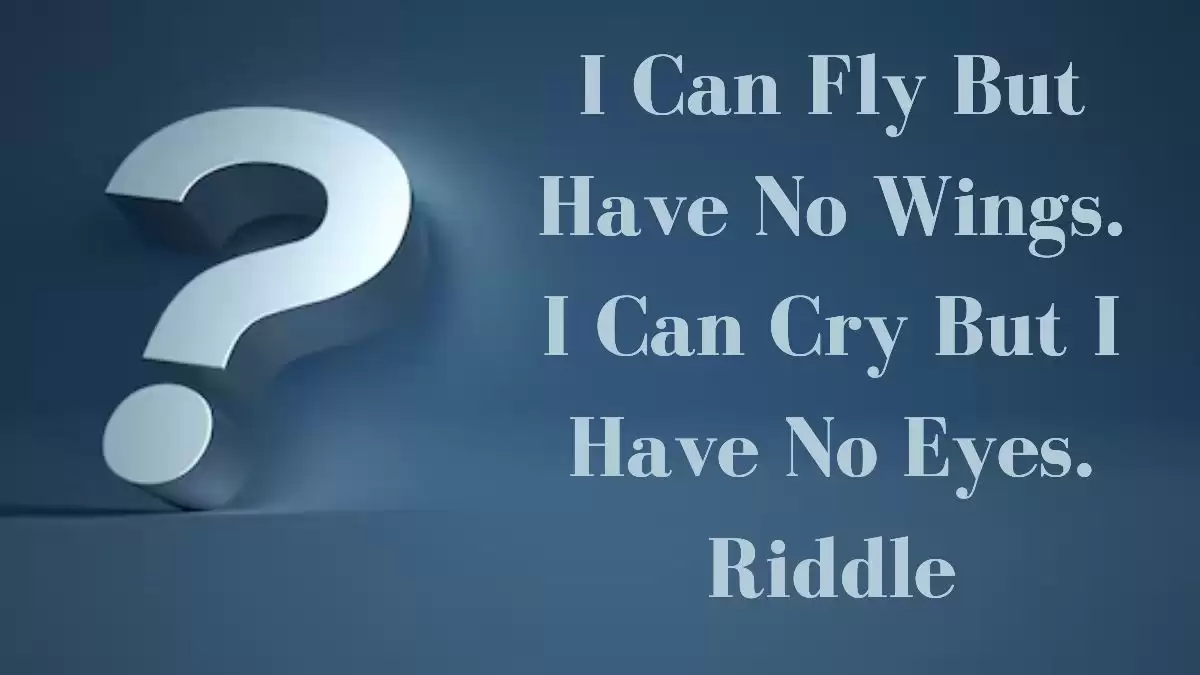I Can Fly But Have No Wings. I Can Cry But I Have No Eyes. Riddle
by Mathelene
Updated Nov 02, 2023

I Can Fly But Have No Wings. I Can Cry But I Have No Eyes. Riddle
This riddle describes an intriguing concept through poetic language. It challenges your imagination and language comprehension. The first part, "I can fly but have no wings," suggests a characteristic associated with flight or movement, yet it doesn't involve the physical appendages typically required for flying.
The second part, "I can cry but have no eyes," introduces another paradox. Crying is typically linked to emotions and requires eyes to shed tears, but here, the entity can cry without possessing this physical feature. This riddle encourages you to think beyond the literal meaning of words and consider abstract or metaphorical possibilities.
The answer lies in deciphering these metaphorical clues to identify what the riddle is referring to. It's a playful and imaginative exercise that can lead to a sense of satisfaction when the solution is found.
Join the league of riddle enthusiasts where every twist and turn in our puzzles keeps you captivated, entertained, and intrigued. Engage in friendly competition and share discoveries with fellow riddle experts at Fresherslive.
I Can Fly But Have No Wings. I Can Cry But I Have No Eyes. Riddle Answer
Answer: Clouds.
Explanation:
In this riddle, the enigmatic subject possesses characteristics that initially seem contradictory. It can "fly" without the use of wings, which hints at its ability to move through the air. It can "cry," symbolizing its capacity to release moisture or precipitation, even though it lacks physical eyes.
The most crucial clue is the notion that darkness follows it wherever it goes, which implies that it is responsible for creating overcast or rainy conditions. The answer to this riddle is "clouds." Clouds float in the sky, bring rain, and obscure the sun, casting shadows and creating darkness when they pass overhead. This riddle employs metaphorical language to engage the reader's imagination and encourage creative thinking.
What is Riddle?
Get ready for an exciting journey into the world of riddles! Riddles are like puzzles that use clever words and tricky meanings to challenge our thinking. They have been enjoyed for a very long time, and they make our brains work hard. Imagine a place where riddles are like kings. They twist and turn with tricky words, making us scratch our heads. Some riddles are very old, passed down for generations, while others are brand new and designed to make us think.
As we go on this riddle adventure, get ready to use your imagination and brainpower. Riddles are not just simple questions. They make us think hard and find smart answers. Each time you solve a riddle, it's like a big win, showing how clever you are. Even when a riddle is too tough to crack, it leaves us wondering and wanting to learn more. So, let's enjoy riddles together. They will make you curious, imaginative, and smarter. We'll uncover your brilliance one riddle at a time and have fun along the way!
Advantages Of Solving Riddles
Thinking Skills: Riddles make you think hard, improving your ability to solve tricky problems and come up with creative ideas.
Problem Solving: They challenge you to find unique solutions, teaching you to look at things from different angles and solve complex issues.
Language Skills: Riddles are like word puzzles. They help you learn new words and understand how language works, making you better at talking and writing.
Creativity: Riddles encourage you to think outside the box, which means thinking in new and creative ways. This skill can be useful in many areas of life.
Mental Exercise: Solving riddles is like a workout for your brain. It keeps your mind active, improves your memory, and helps you focus better.
I Can Fly But Have No Wings. I Can Cry But I Have No Eyes. Riddle - FAQs
The answer to this riddle is "clouds." Clouds can move through the sky, bring rain (crying), and block sunlight, causing darkness to follow their path.
The riddle's origin is not well-documented, but it's a popular example of a classic riddle that challenges one's ability to think metaphorically and creatively.
This phrase suggests that the subject of the riddle has the ability to move through the air or the sky, even though it lacks the physical feature of wings.
Riddles like this one are intriguing because they challenge our ability to think creatively, metaphorically, and outside the box. They engage our imagination and language comprehension.
Metaphors are used in riddles to stimulate creative thinking and challenge the reader's ability to find abstract connections between seemingly contradictory concepts. Riddles often play with language and engage the imagination.







